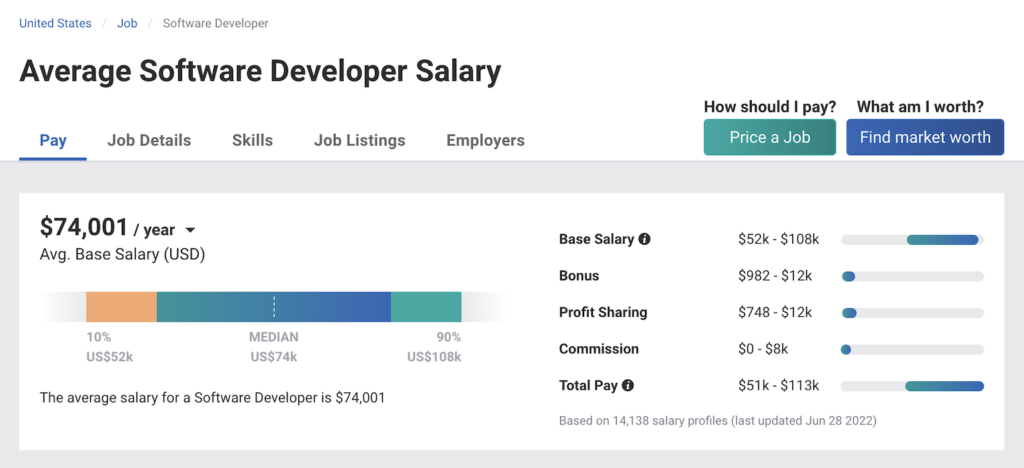Committed Developers vs. In-House Teams: Which Is Right for You?
The decision in between utilizing specialized developers and keeping an internal group is a substantial one that can influence the trajectory of your tasks and total service strategy. Dedicated designers offer a degree of adaptability and customized competence that can be beneficial for specific, temporary efforts. On the other hand, internal teams add to a cohesive firm society and a nuanced understanding of lasting goals. By analyzing essential elements such as spending plan, project extent, and desired control, you can much better determine which method straightens with your organizational needs. The implications of this choice prolong past immediate outcomes-- think about the broader effect on your organization landscape.
Understanding Devoted Designers
The expanding need for specialized abilities in the tech industry has caused the introduction of dedicated developers as a practical solution for several organizations. These experts are usually contracted on a job basis, allowing business to utilize certain knowledge without the long-term dedication connected with full time hires. Committed programmers are commonly embedded within a customer's team, supplying adaptability and scalability to meet project demands.
This design allows companies to access a worldwide ability pool, which is specifically helpful in a rapidly progressing technical landscape. Devoted programmers can be sourced from various geographical locations, guaranteeing that firms can find the best ability at competitive rates. They usually bring a wealth of experience and understanding, having dealt with varied jobs throughout various industries.
Additionally, committed programmers can focus specifically on the tasks available, improving performance and performance. They are outfitted to integrate flawlessly into existing operations, working together very closely with in-house teams to accomplish job goals. This technique not only decreases the problem of recruitment and training yet additionally enables organizations to remain agile, adjusting promptly to transforming market demands and technical innovations.
Advantages of In-House Teams

Furthermore, internal teams often tend to have a deeper understanding of the company's mission, worths, and objectives. This placement can improve employee engagement and motivation, as staff member really feel more connected to their work and the organization's success. In addition, having a specialized in-house team enables better alignment of objectives and approaches, as these participants are regularly concentrated on the company's top priorities.
Internal teams additionally assist in quicker decision-making processes, as they can react more swiftly to difficulties and adjustments. The well-known relationships and familiarity with business methods permit structured workflows and minimized miscommunication. Ultimately, the mix of a cohesive culture, positioning with business objectives, and effective communication makes internal teams a beneficial possession for several organizations, especially those wanting to cultivate lasting growth and advancement.
Price Considerations
When examining cost factors to consider, both devoted programmers and in-house groups present distinct economic implications for organizations. Engaging specialized designers typically entails a pay-per-project or per hour price design, which can be cost-efficient for companies with rising and fall project needs. This technique enables for adaptability in scaling sources up or down, ensuring that business only spend for the solutions they need.
On the other hand, in-house groups entail fixed prices, including incomes, advantages, and overhead expenditures such as office and devices. While this version offers higher control and instant availability of resources, it may lead to higher long-term costs, particularly the software development company if the workload does not warrant a permanent personnel.
In addition, firms ought to think about the surprise costs related to employment and training of in-house staff members, which can additionally stress budgets. In many cases, the time and resources invested in handling an in-house team can detract from the organization's core company goals.

Project Management and Adaptability
Task administration and versatility are important variables that influence the choice in between specialized developers and internal groups. Devoted programmers generally provide a high level of flexibility, allowing companies to range sources up or down based on project needs. This agility can be specifically beneficial for organizations experiencing changing workloads or those looking for to introduce quickly. Dedicated groups frequently have established procedures for taking care of tasks effectively, leveraging particular approaches like Agile or Scrum, which facilitate iterative development and adaptability.

Inevitably, the option between committed developers and internal groups rests on the preferred level of flexibility and the particular project management requirements. Companies must evaluate their functional dynamics, job intricacy, and source accessibility to figure out which option lines up best with their calculated objectives.
Making the Right Choice
Selecting the ideal development method-- in-house groups or devoted programmers-- click for info calls for a mindful analysis of different aspects that straighten with a firm's critical goals. nearshore software development. Initially, take into consideration the nature of the task. If it requires specialized skills or a quick scale-up, committed programmers may be more ideal. On the other hand, internal teams can supply far better continuity and assimilation with existing workers.
Next, evaluate your spending plan. Devoted designers frequently present an affordable solution for short-term tasks, while in-house groups might incur greater long-term expenditures as a result of wages, advantages, and expenses prices. Evaluate the level of control and partnership desired; internal teams usually foster more powerful communication and placement with firm culture.
If immediate outcomes are needed, committed programmers can be onboarded swiftly, whereas building an internal team takes time for employment and training. If continuous development is important, investing in an internal group may generate much better returns over time.
Final Thought
In conclusion, the decision between in-house groups and dedicated developers hinges on project requirements and organizational objectives. Conversely, in-house groups grow a natural society and deeper positioning with long-lasting goals.
The decision between making use of committed programmers and keeping an in-house team is a significant one that can affect the trajectory of your projects and general service method.Task administration and versatility are important aspects that influence the choice in between specialized designers and internal teams. software engineering staffing.In contrast, internal teams might stand out in maintaining a regular job management structure due to their experience with the company's society and long-term objectives. Dedicated developers frequently present an affordable service for temporary projects, while in-house teams might incur greater long-lasting costs due to salaries, advantages, and overhead expenses.In verdict, the decision in between specialized developers and internal groups hinges on job requirements and organizational purposes